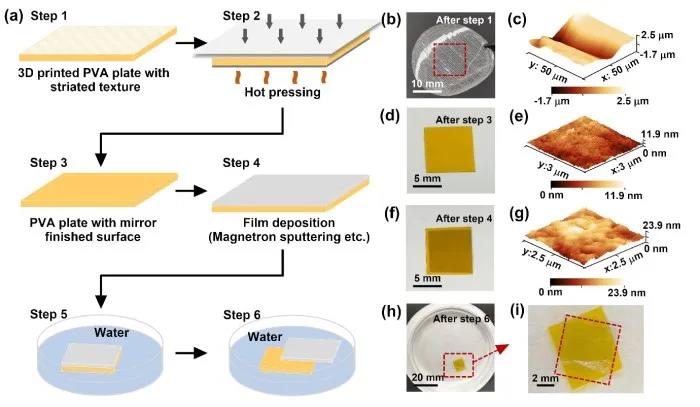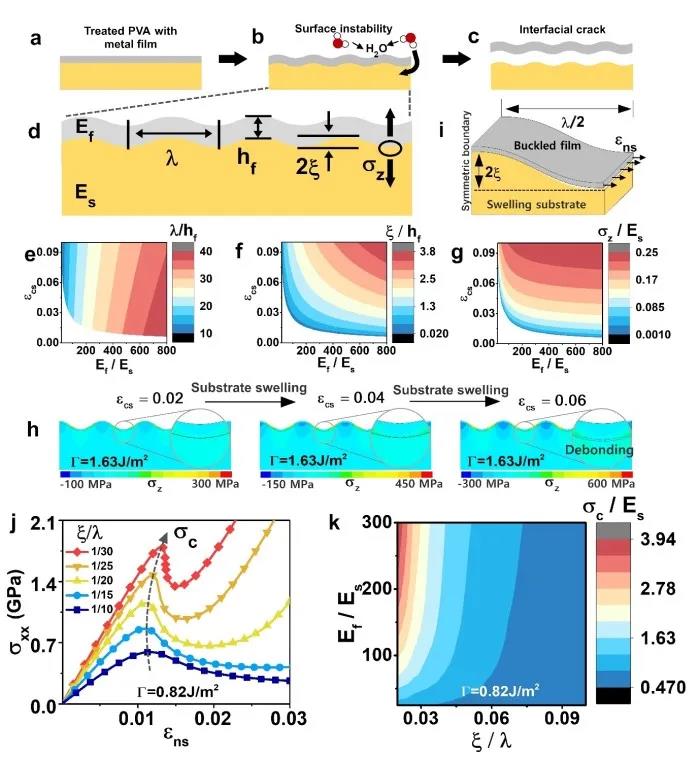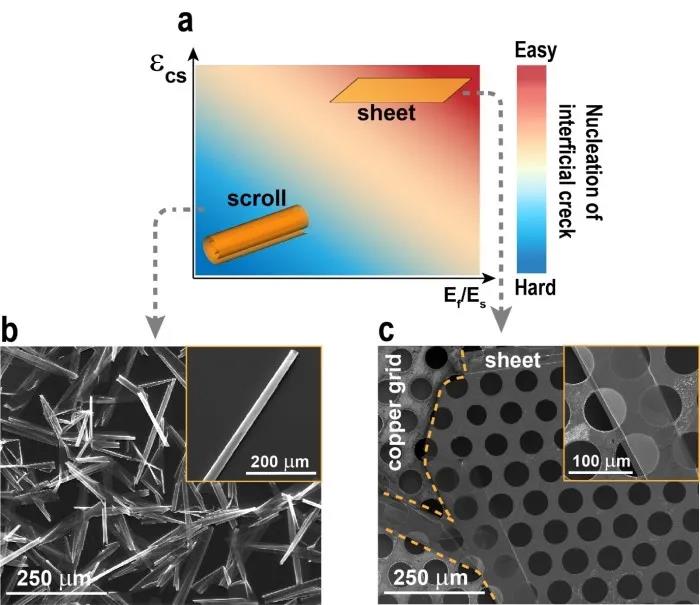
hotline:
17715390137
Tel/Wechat:
18101240246 (Technology)
0512-68565571
Email:mxenes@163.com (Sales Engineer)bkxc.bonnie@gmail.com
Scan the code to follow or search the official account on WeChat:
2D Materials Fronrier After paying attention,
click on the lower right corner to contact us,
Enter enterprise WeChat.
Professional Services Online

[Picture and text guide]
 Figure 1. Schematic of a two-dimensional metal preparation method based on PSBEE
Figure 1. Schematic of a two-dimensional metal preparation method based on PSBEE
h) – i) Substrate-free Ti film suspended in water after being peeled from the PVA substrate.

Figure 2. Structural and geometrical characterization of a two-dimensional metal prepared based on this method
a) – c) Scanning electron microscope images of two-dimensional Ti, two-dimensional FeCoNiCrNb, two-dimensional ZrCuAlNi transferred to the copper network;
e) – f) Two-dimensional Ti, two-dimensional FeCoNiCrNb, two-dimensional ZrCuAlNi high-resolution transmission electron microscope pictures, where the built-in pictures are corresponding fast Fourier transform maps;
g) – i) 2D Ti, 2D FeCoNiCrNb, 2D ZrCuAlNi surface morphology at the boundary of the silicon wafer. The built-in curve is a height map sweeping across the 2D metal boundary.
 Figure 3. Theoretical description and finite element simulation of the peeling phenomenon caused by surface wrinkles
Figure 3. Theoretical description and finite element simulation of the peeling phenomenon caused by surface wrinkles
a) – c) Schematic diagram of the process of diffusion of water molecules into the metal-PVA substrate system to cause surface instability and promote film peeling;
d) a geometric description of the surface of the folds, including the wavelength l of the folds, the amplitude x and the stress sz perpendicular to the plane at the film-substrate interface;
e) – g) contour maps of l / hf, x / hf and sz / Es with ecs and Ef / Es as independent variables
h) Finite element simulation of crack generation at the warped interface of a constrained film-substrate system during expansion;
i) Schematic diagram of interfacial crack growth and expansion during continuous film pulling;
j) the effect of the surface fold geometry on the critical stress in the membrane during crack propagation;
k) Contour map of sc / Es with Ef / Es and x / l as independent variables.

Figure 4. Morphological transition of 2D FeCoNiCrNb from nano-film to micro-roll
a). Schematic diagram of the final morphology change from nano-film to micro-volume under the control of ecs and Ef / Es during the film peeling process. Note that the colors in the figure represent the difficulty of the interface cracks;
b). Image of FeCoNiCrNb microvolume transferred to Si observed under scanning electron microscope;
c). The image of FeCoNiCrNb baseless nano-films transferred to the copper net under a scanning electron microscope.
 Figure 5. Regulation of output 2D metal geometry
Figure 5. Regulation of output 2D metal geometry
a) a schematic view of a thin film deposition process with a mask plate involved;
b) – e) actual photo of the mask, the built-in picture is a higher magnification optical microscope image;
f)-h) Scanning electron microscopy images of circular, square and hexagonal 2D FeCoNiCrNb prepared by mask film deposition.
Graphic link:
https://www.sciencedirect.com/science/article/abs/pii/S1369702120300390?via%3Dihub
Website of the research group:
http://www.cityu.edu.hk/stfprofile/yonyang.htm

| Reminder: Beijing Beike New Material Technology Co., Ltd. supplies products only for scientific research, not for humans |
| All rights reserved © 2019 beijing beike new material Technology Co., Ltd 京ICP备16054715-2号 |